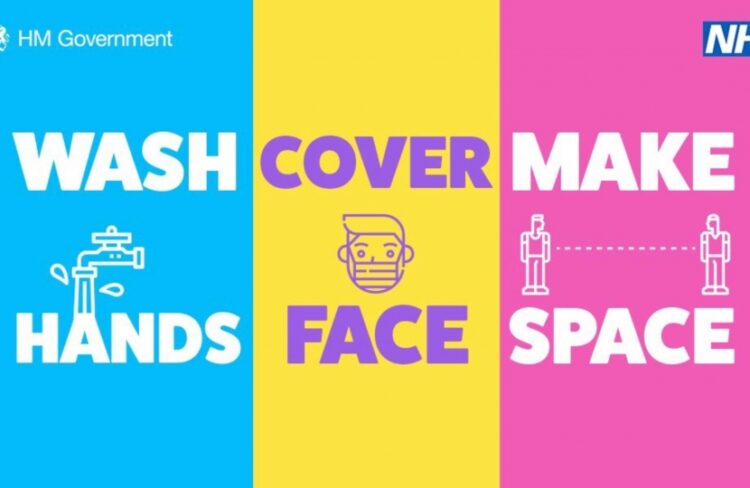Rhyme and reason

Dominic Mills argues for the revival of three of advertising’s dying arts: the power of three, the power of rhyme, and the copy-heavy TV ad
At some date in the future (not too far, I hope) historians will tell the history of Covid in the UK. One simple way to do it would be by looking at the evolution of government slogans.
It started with ‘Stay home, protect the NHS, save lives’, which wasn’t exactly snappy but appeared to do the trick by scaring us into submission.
That was followed, as stage one subsided and the economy opened up, by ‘Stay alert. Control the virus. Save lives’, which didn’t roll too easily off the tongue either, but again was effective.
Why did they work? One reason probably was because they demonstrated the power of three, a device long known to marketers and copywriters as a means to lodge an idea or concept in the head: ’Just do it’, ‘Finger-Lickin’ good’, Obama’s ‘Yes, we can’, or closer to home, ‘Get Brexit done’.
Three words or three phrases… it doesn’t matter: either works. Here’s an explanation.
Now — and apologies if I’ve missed any — there’s a third Covid slogan, ‘Hands. Face. Space’, which also uses the power of three but moves the game on by adding a rhyming element.
At last. Let’s have some more rhyming, and let’s hope advertisers pick up on it. As the Keats Heuristic explains, the power of rhyme is unbeatable. Not only does it help stick ideas in the memory, but also adds credibility, as evidenced by two behavioural scientists called McGlone and Tofighbakhash, whose experiment showed that people were twice as likely to remember and find a rhyming slogan truthful.
But where are they in advertising these days? The best that I can remember are from different eras. For me ‘Beanz meanz Heinz’ sits at the top of the tree, closely followed by ‘A Mars a day helps you work, rest and play’, both using the power of three and the power of rhyme. In 2004 Andrex dropped ‘Soft, strong and very long’. Further back, there’s Jaguar’s “Grace. Space. Pace’. All consigned to history.
They don’t always have to use three to be effective. “For mash, get Smash’ was a powerhouse and, I’m now ashamed to admit because it was, if not racist then grossly insensitive, ‘Um Bongo, Um Bongo, they drink it in the Congo’.
But somewhere along the line, this kind of sloganeering got lost. Perhaps it’s the result of the marginalisation of copywriting; perhaps the skill has gone; perhaps it’s that they demand time and effort — even though the best ones pay back for years; perhaps they’ve been displaced by the need to own some kind of purpose; or perhaps no-one cares.
But perhaps the industry will be inspired by Covid messages and think, ‘yeah, we can do one of those’.
Copy-heavy TV ads vs the dialogue-free
Talking of dying arts, one thing we don’t see these days is the copy-heavy TV ad. You know, the type where there’s lots of dialogue or a monologue.
I ask because I’ve seen two such examples in the last week, and both stood out precisely because they’re different.
I’m not normally – well, ever, to be accurate – in the market for Estee Lauder Advanced Night Repair. But this ad stopped me in my tracks.
It’s 60 seconds long and features TV presenter Alice Levine just talking while she applies the stuff. It’s a long, long, script but feels off the cuff and natural.
Similarly, a Nationwide ad also caught my attention. It’s one of its poem series, and this time features poet and performer Sugar J (aka Jeremiah Brown) telling us how irritating younger siblings who invade his space are. In the background, his young brother slides in, grabs something and disappears silently. Of course, he doesn’t really mind.
It’s a charming performance from Sugar J, warm, honest and one that bears repeated viewing. Oh yeah, and it’s selling mortgages for people who need more room, but in the most gentle and understated manner.
What’s interesting to me about these ads from a craft perspective is that they have in part come from outside the agency system, insofar as Sugar J’s script is his own and the Estee Lauder ad was created by The Outfit, whose ‘About’ page is headlined ‘We’re not an agency’. Even if Levine didn’t write the script, it feels as though she had a big hand in it. Is this another pointer to the loss of writing skills in agencies?
And then we have the new John Lewis ad, ‘For the Joy of Home’. There’s something reassuring about seeing John Lewis back on TV, a sense that normal life is not going completely down the tubes.
The ad shows busy working-from-home parents whose kids turn the house upside down to organise a surprise show.
Now we’ve seen plenty of John Lewis ads (all the Christmas ones, certainly) that have no dialogue but are accompanied by music and lyrics that set the mood and convey the message.
We have music again — the Muppet Show theme tune — but no lyrics. Like the nation, I suspect, I provided them myself – because who doesn’t know how the words go.
Come on, everybody….’It’s time to play the music, it’s time to light the lights’.
And that, I suppose, is part of the secret. By singing along, we’re engaging.
And I need hardly mention that there’s a rhyming couplet or two in the lyrics.




